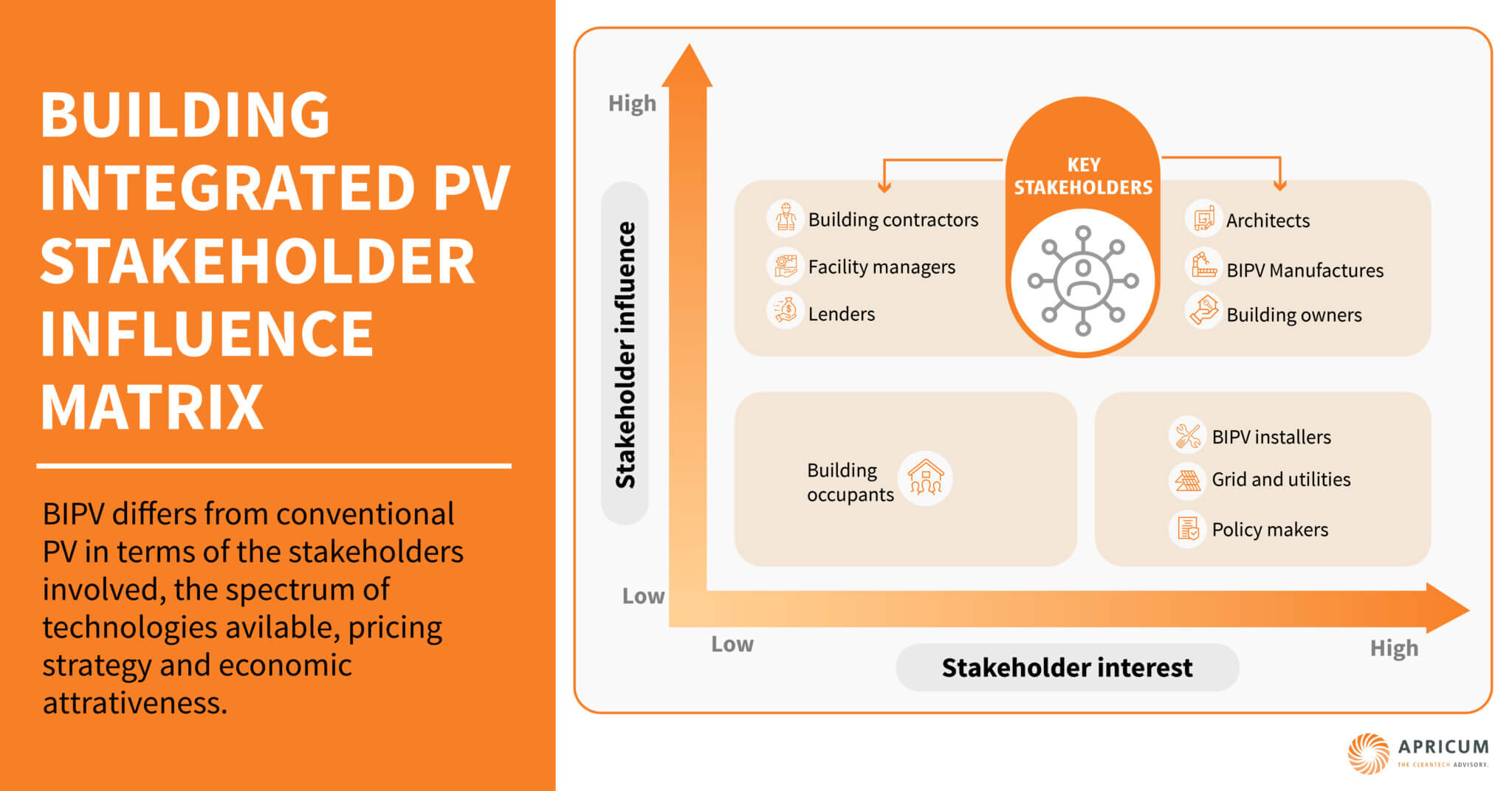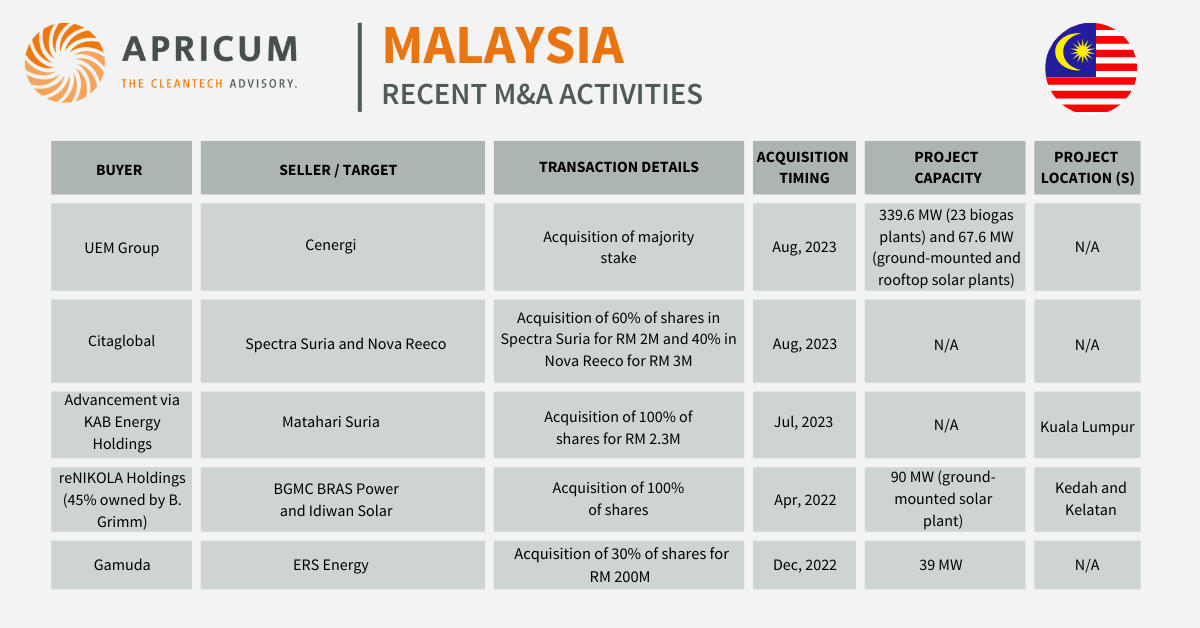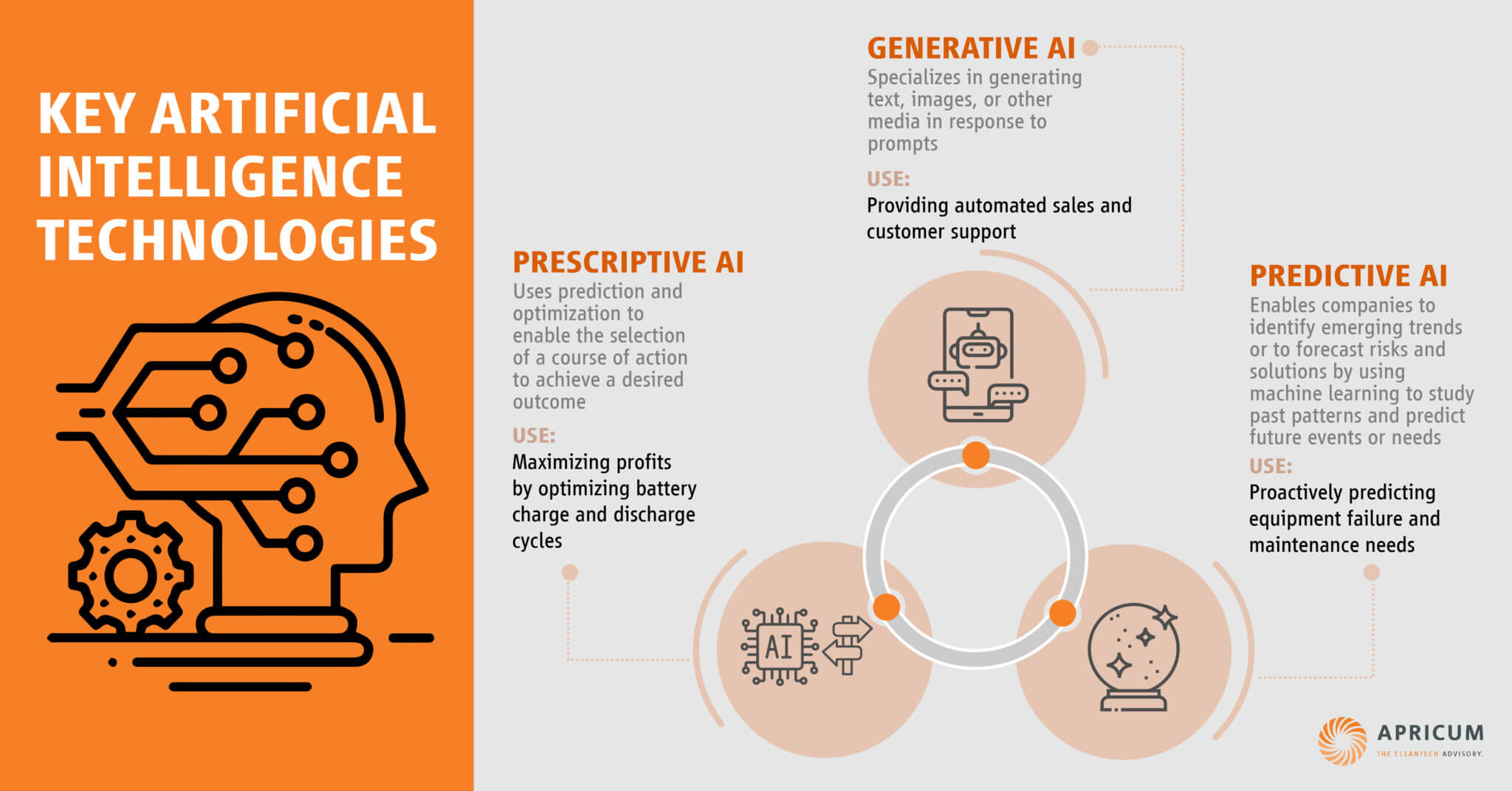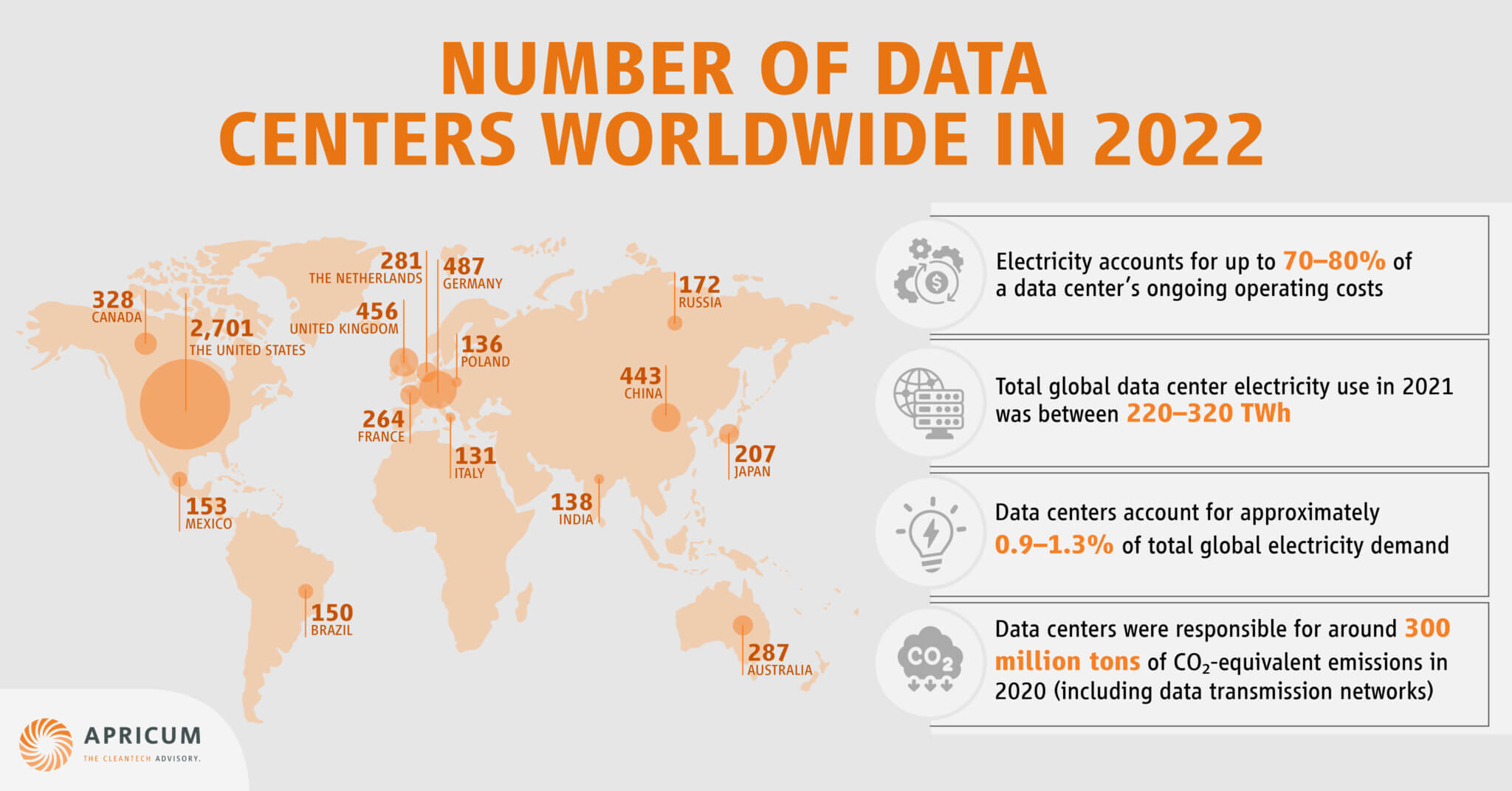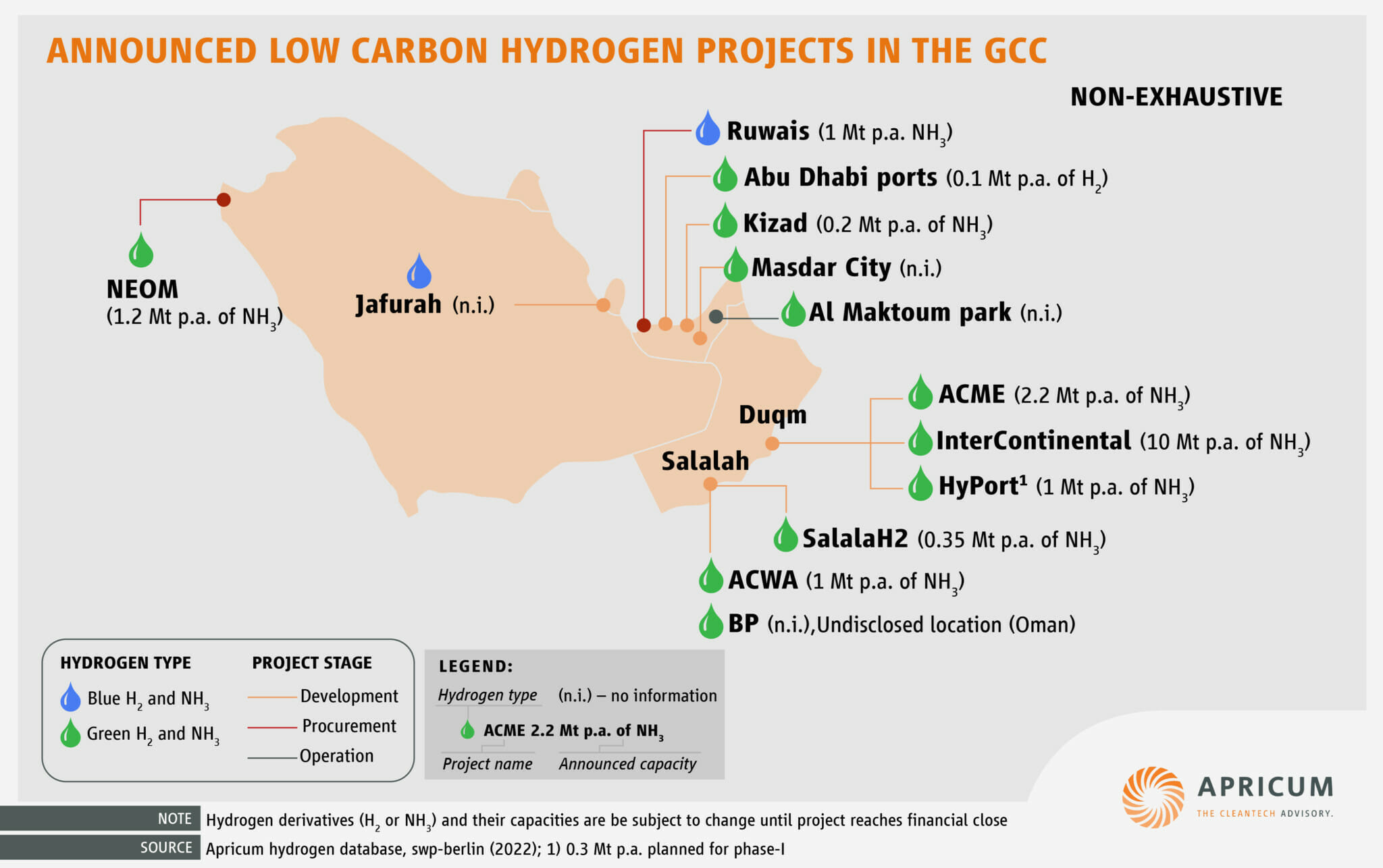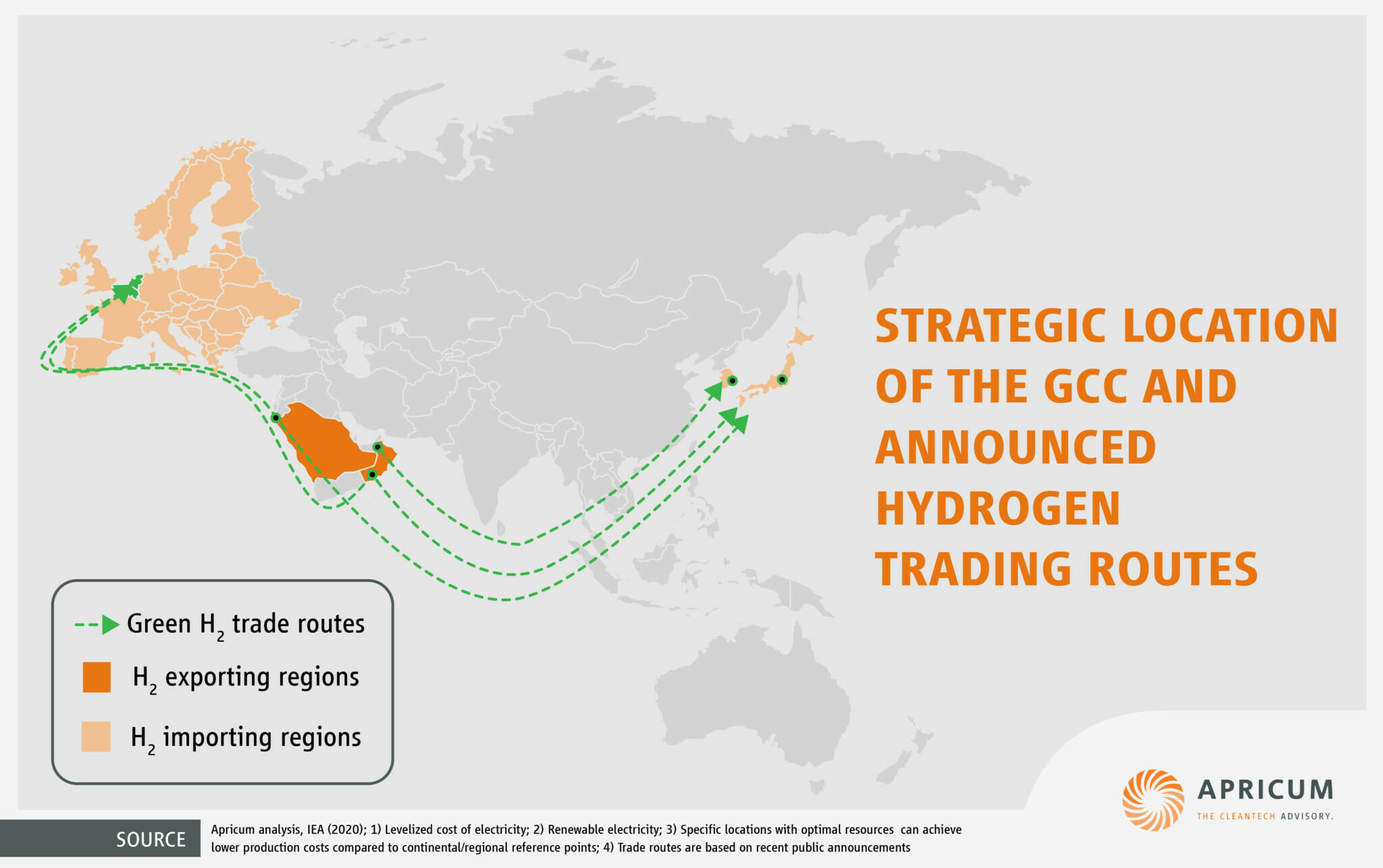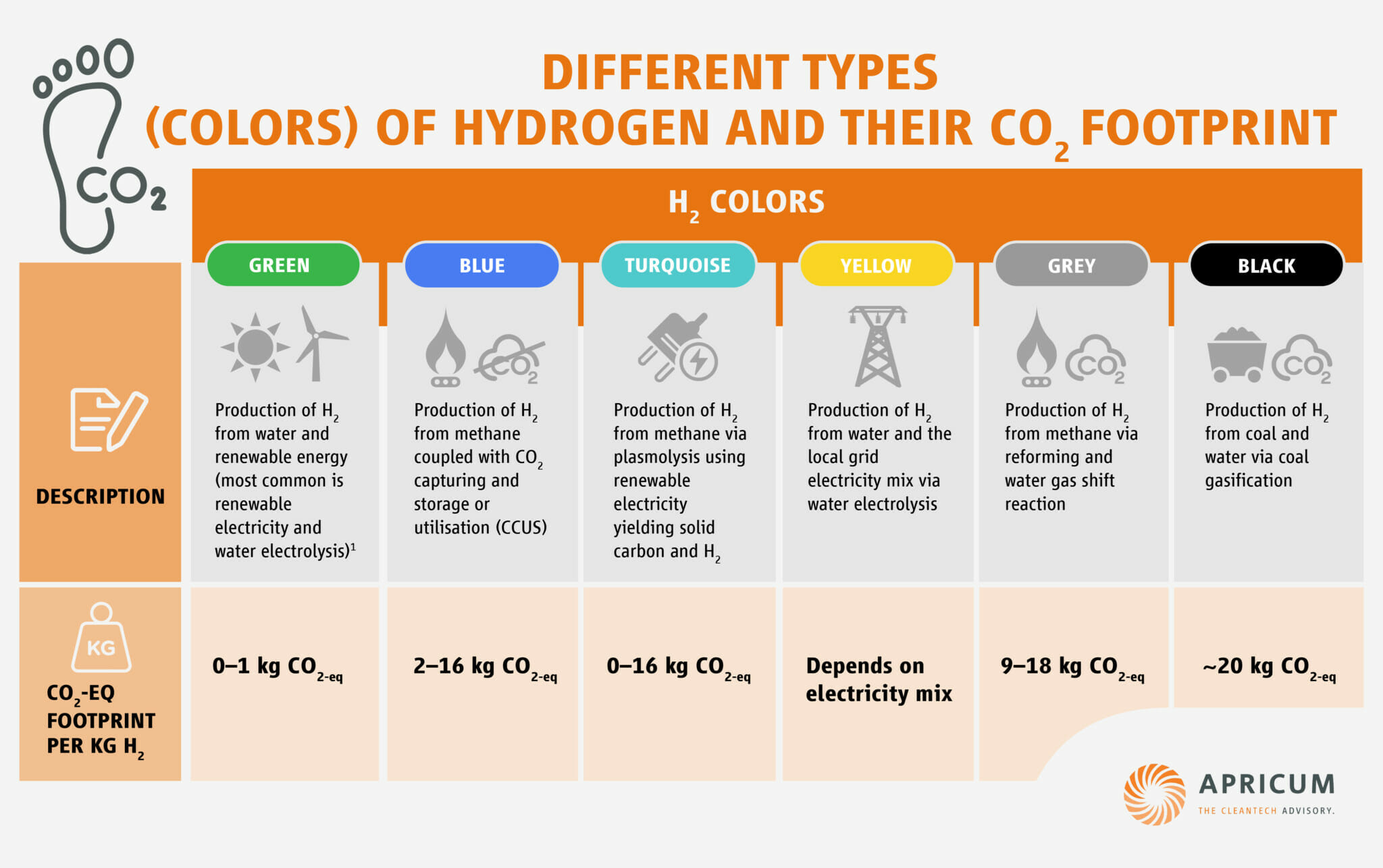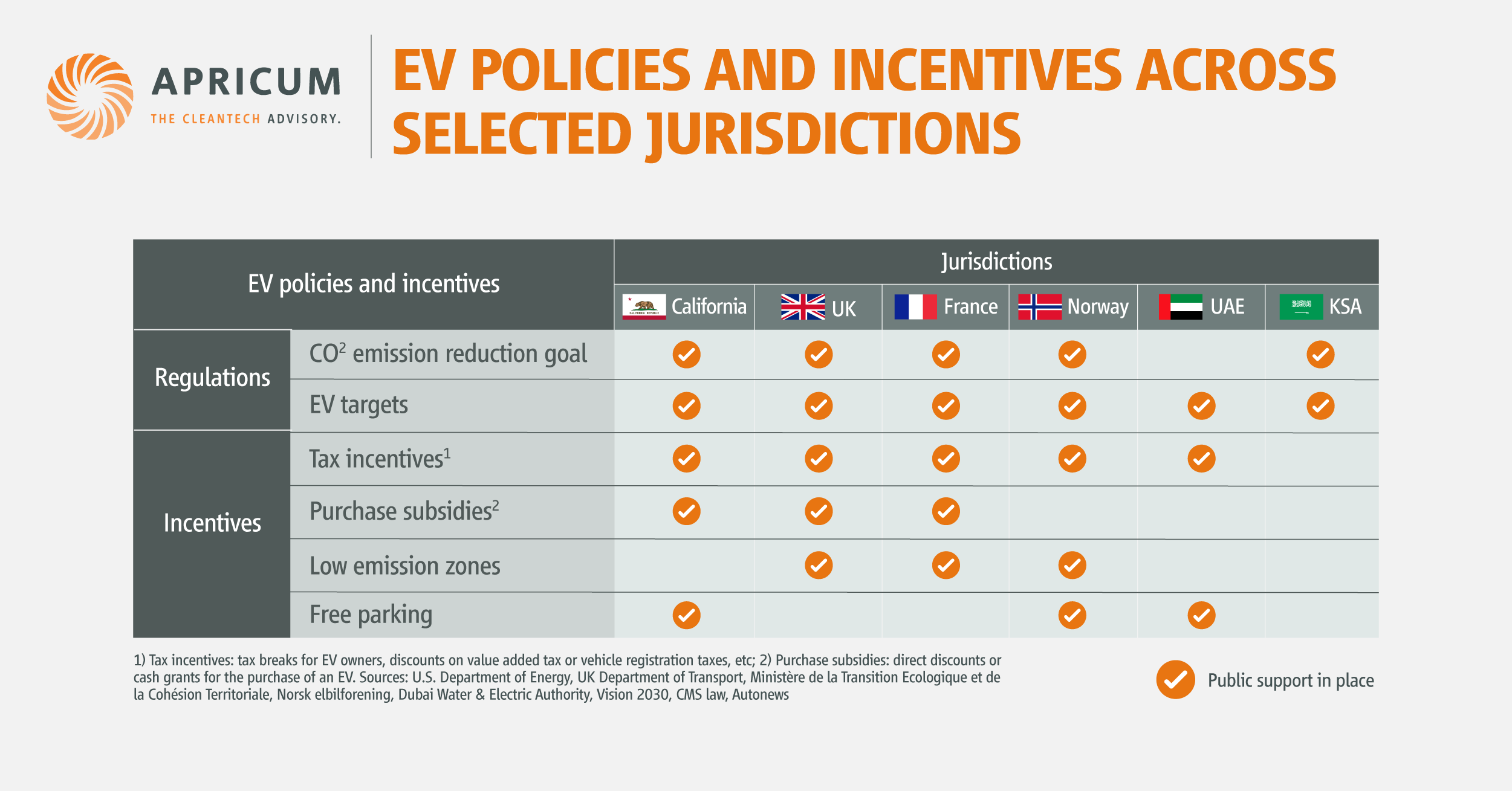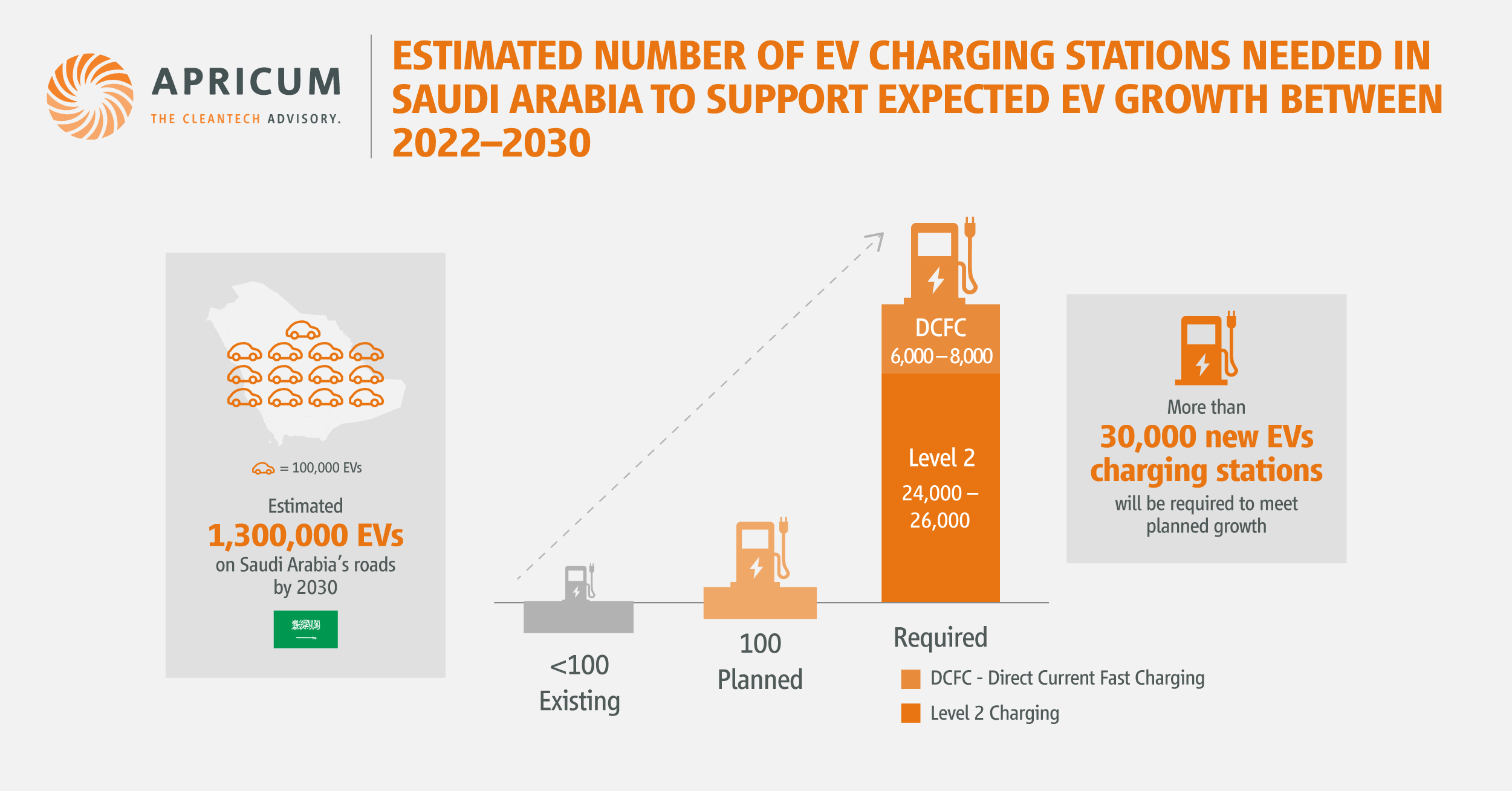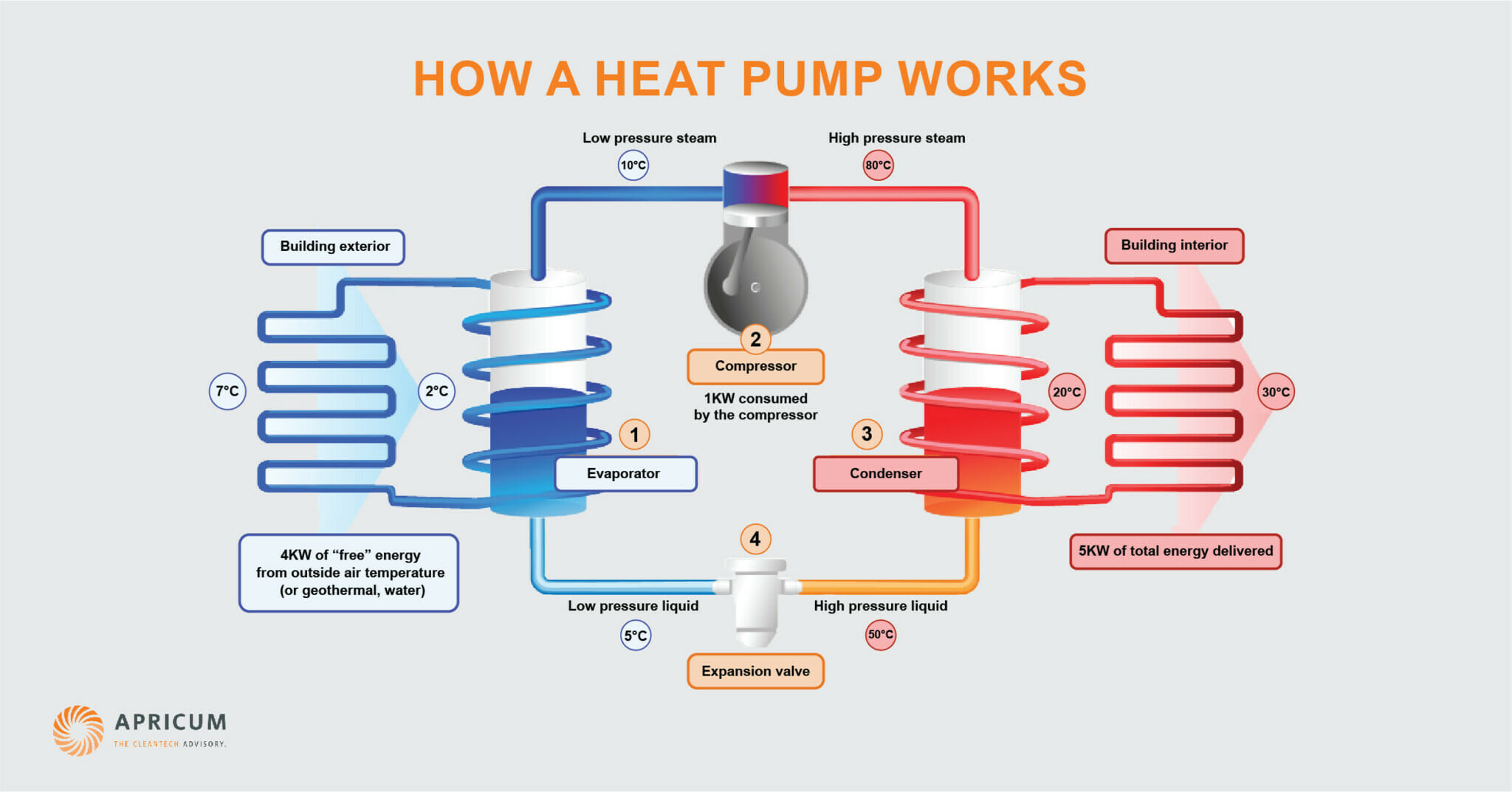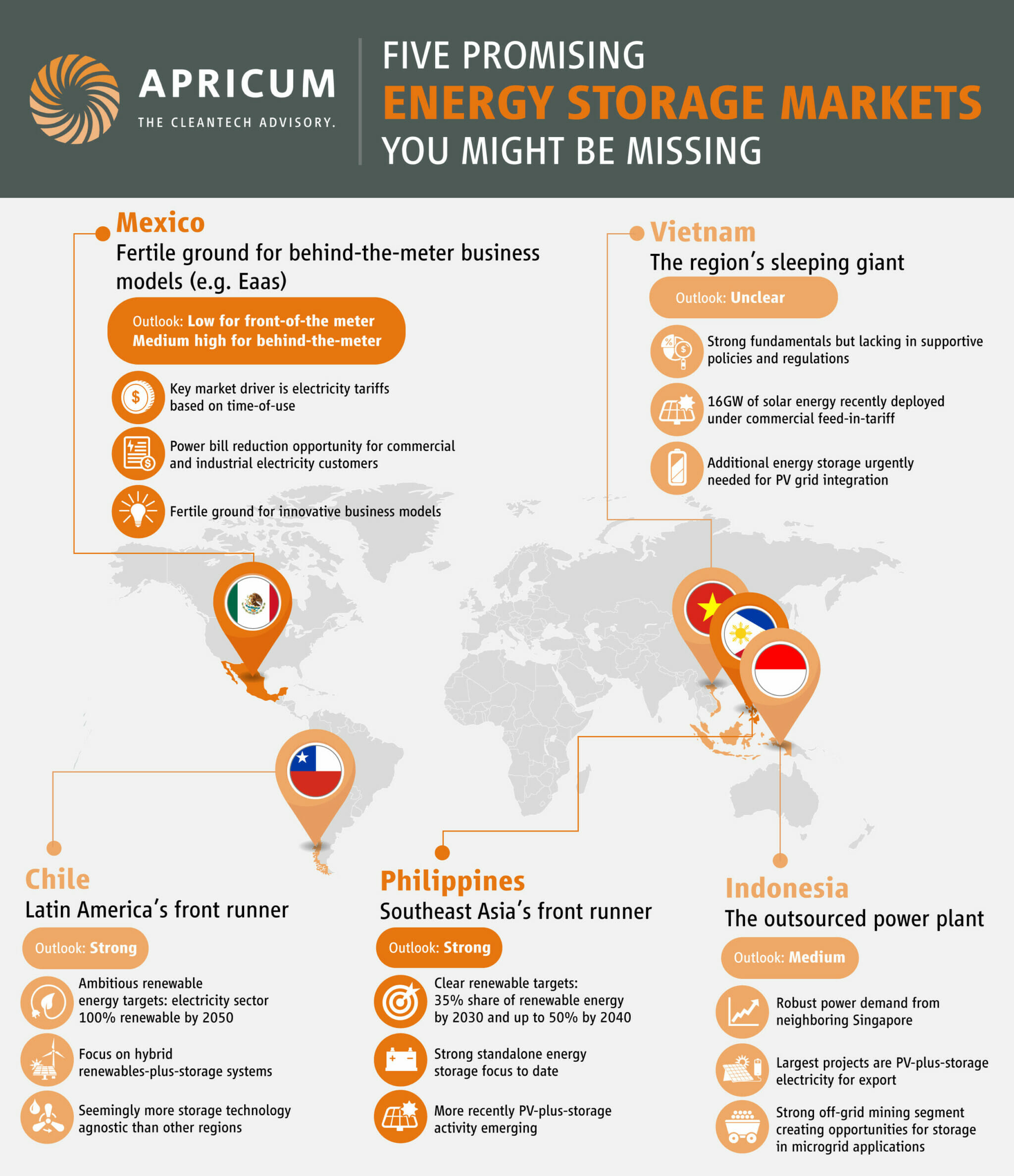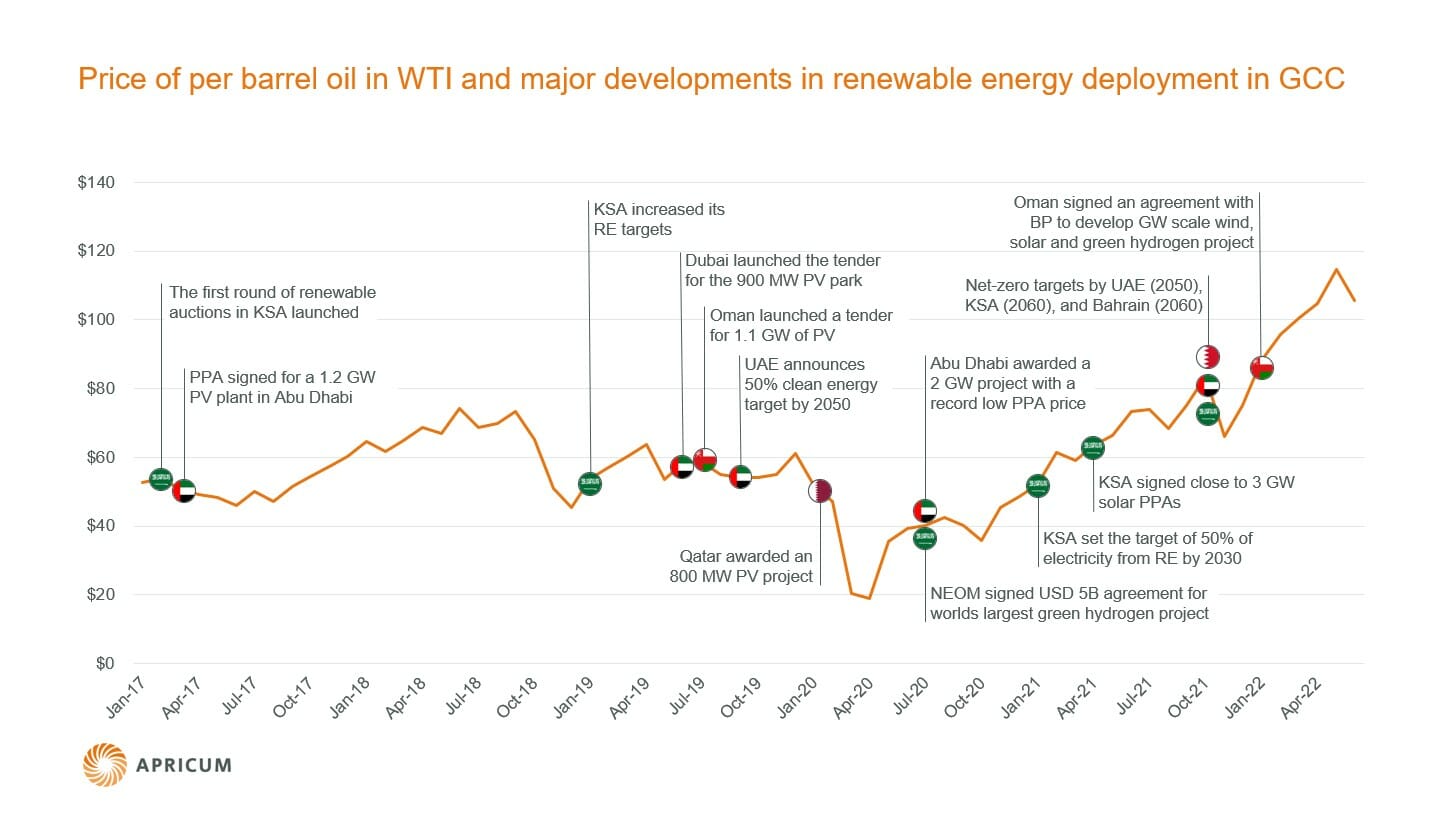The decarbonization of the building and construction sector is essential if we are to meet the climate targets of limiting global warming to 1.5°C world wide by 2050. This, however, requires, not only increasing the energy efficiency of buildings in general, but also mandates the decarbonization of space and water heating as well as cooling.
The ongoing reshaping and acceleration of policy action and the related allocation and facilitation of funding will support markets in the move to embrace low carbon and high efficiency technologies as well as enhanced building materials and best building practices. A particular focus is needed not only on new constructions but even more so on the very large renovation segment to successfully transition to a sustainable building and construction sector.
A big step in this direction is the increased adoption of low carbon technologies such as heat pumps, solar thermal as well as photovoltaics. In part, this further electrification of buildings also offers the opportunity to leverage the growing digital economy, allowing greater flexibility of demand and offering further enhanced demand response mechanisms to the energy sector. All of the above goes hand in hand with the decarbonization of energy generation and the general trend to a new digital energy system. They represent the key levers and opportunities in the energy transition – it is now the time for current and potential future market stakeholders to step up efforts and play an active role in the opportunities provided by the energy and heat transition in the building sector.
The building and construction sector is key to decarbonization
While the 2015 COP 21 conference in Paris agreed to limit global warming to well below 2°C, the various decarbonization scenarios from the Intergovernmental Panel for Climate Change (IPCC) conclude that global warming, in fact, must be limited to 1.5°C world-wide. This will require the decarbonization of economic activity across the globe and to some extent, its materials economy as well. Despite the much-discussed impact of the transport sector on energy demand and emissions, the global building and related construction sector accounts for the largest shares overall with 37% of energy-related CO2 emissions and 36% of final energy use[1] as shown below in Figure 1.
Figure 1 Global breakdown shares of CO2 emissions and final energy usage 2020
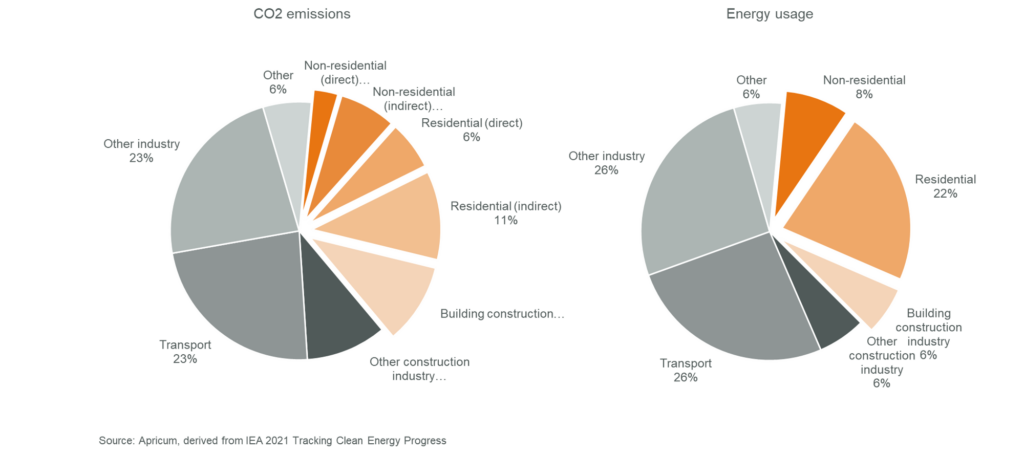
A look at the building energy intensity per unit of floor area, as a proxy for energy efficiency over time, suggests that some progress has already been made. The primary factors responsible for this are twofold. Firstly, the use of advanced materials as well as more efficient building designs to improve building envelopes and increase thermal performance, and secondly, more efficient building energy systems are being adopted.
Breaking this down into further detail (see Figure 2) for selected IEA countries, we see that space, water heating and cooling combined account for more than 70% of total building energy use and represent an important lever for further decarbonization of the building sector.
Figure 2 Types of final energy use by global buildings 2018

When viewing market shares of space and water heating equipment in Figure 3, we see a shifting away from carbon intensive fossil fuel-based heating, albeit at a slow rate. Fossil fuel-based equipment sales in 2020 still represent close to a 50% share overall. This suggests that a transition towards truly sustainable buildings requires a strategic shift away from the use of fossil fuels. Accelerating the adoption of low carbon options for space, water heating and cooling such as heat pumps, solar thermal and photovoltaic technologies effectively offer the potential to decarbonize water, space heating and cooling in buildings to a large extent.
Figure 3 Global market shares of space and water heating technologies by energy intensity, 2020

Current efforts are not sufficient to reach net-zero
Despite these efforts already underway, they are still not enough to reach the 2050 net-zero emissions target. Greater improvements in building energy intensity and heating technologies are needed to achieve carbon neutrality. To align with the IEA Sustainable Development Scenario[2]. the global average building energy intensity per unit of floor area would need to be roughly 30% lower than current levels by 2030, and a 60% decrease is needed to reach net-zero emissions by 2050. This implies that near zero-energy buildings must become the de facto standard in new constructions and a doubling of the refurbishment rate of existing buildings on an annual basis at the minimum is required. Currently, near zero-energy construction shares are still less than 5% in most markets for new constructions and typical renovation rates are only 1–2% of the building stock per year.
Figure 4 Global building final energy use per unit of floor area 2010–30
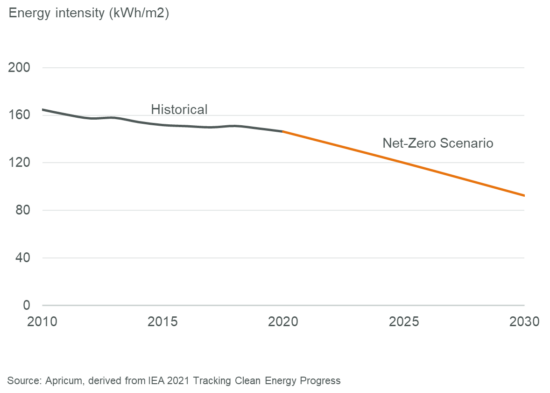
To reach the climate targets, policy must accelerate the transition to green buildings. In the EU, a reshaping and expedition of building energy policy is underway, driven by the European Green Deal[3], FIT 55[4] and the Renovation Wave Strategy. The framework stipulates 49% renewable energy usage in buildings by 2030 and a reduction of final energy consumption by 14%, which includes an 18% reduction of energy consumption for heating and cooling. Regarding an increase of the renovation rate, a target of 3% of total floor area per annum is set for public buildings. These targets, amongst others, are supported by the EU Social Climate Fund to the tune of EUR 72.2B in total planned funding in the period from 2025 to 2032, which must of course be complemented further by private funding.
Apricum’s services for the building decarbonization sector
Apricum’s in-depth knowledge of the renewable energy and cleantech sector covers the full up- and downstream value chains. Apricum’s experienced team combines experts from industry, consulting, finance and investment banking. We offer a full spectrum of services in strategy consulting (such as market screening and assessment, value chain/portfolio strategy or business model/plan development) and transaction advisory (e.g., M&A, debt and equity fundraising, due diligence). With our outstanding industry network, deep expertise and track record, we stand poised to support you in preparing and executing high impact business opportunities and transactions in the decarbonization of industries such as the building and construction sector.
For enquiries, please contact Apricum Managing Partner Nikolai Dobrott or Senior Advisor Joachim Rupp.
[1] 2020: Total 31.5 Gt CO2 emissions; 156 EJ final Energy Use
[2] IEA Sustainable Development Scenario: Limiting the rise in average global temperatures to less than the 2°C above pre-industrial levels by 2030
[3] European Green Deal (Dec 2019) outlines the trajectory for the EU to become climate neutral by 2050
[4] Fit for 55 EU target to reduce greenhouse gas emissions by 55% in 2030 compared to 1990






